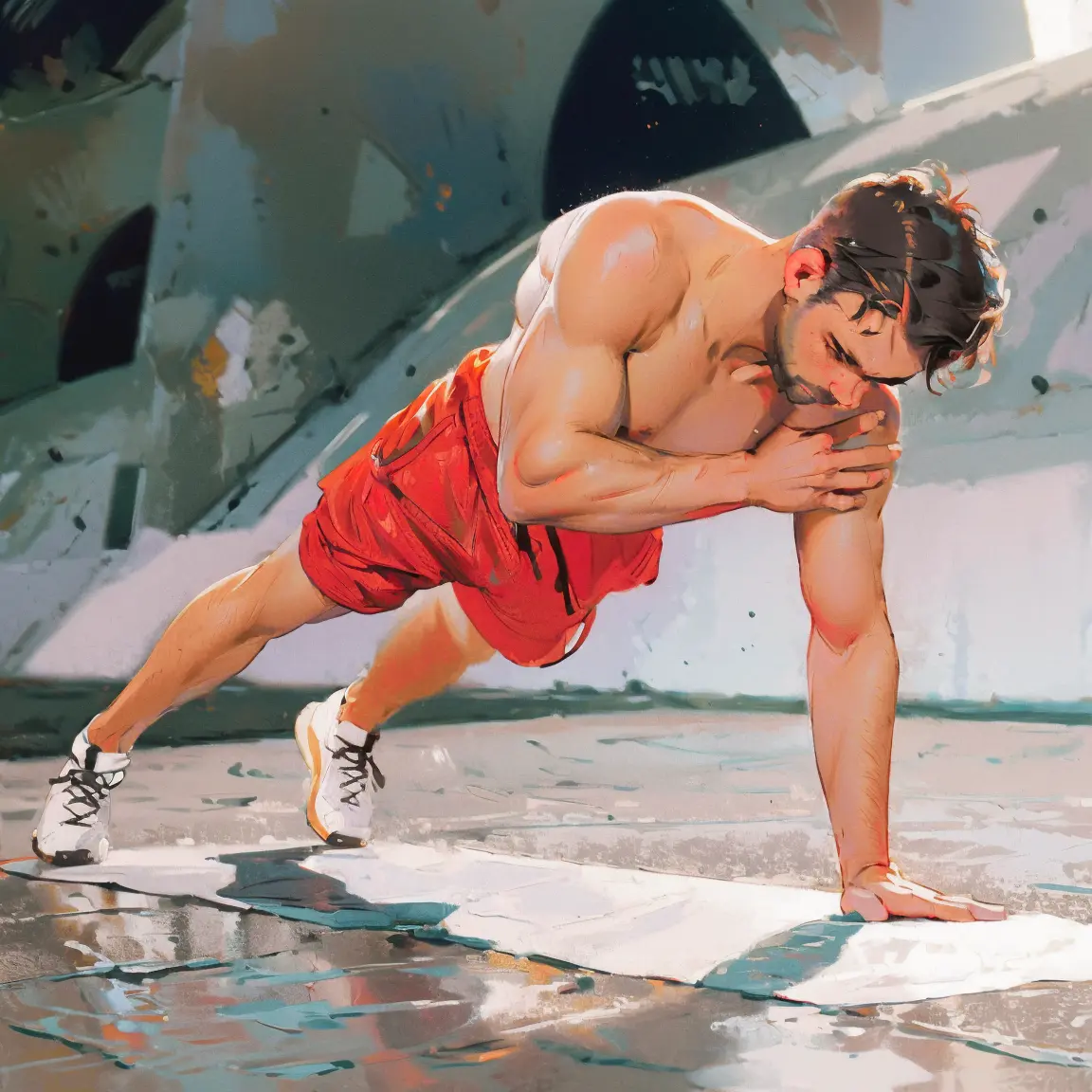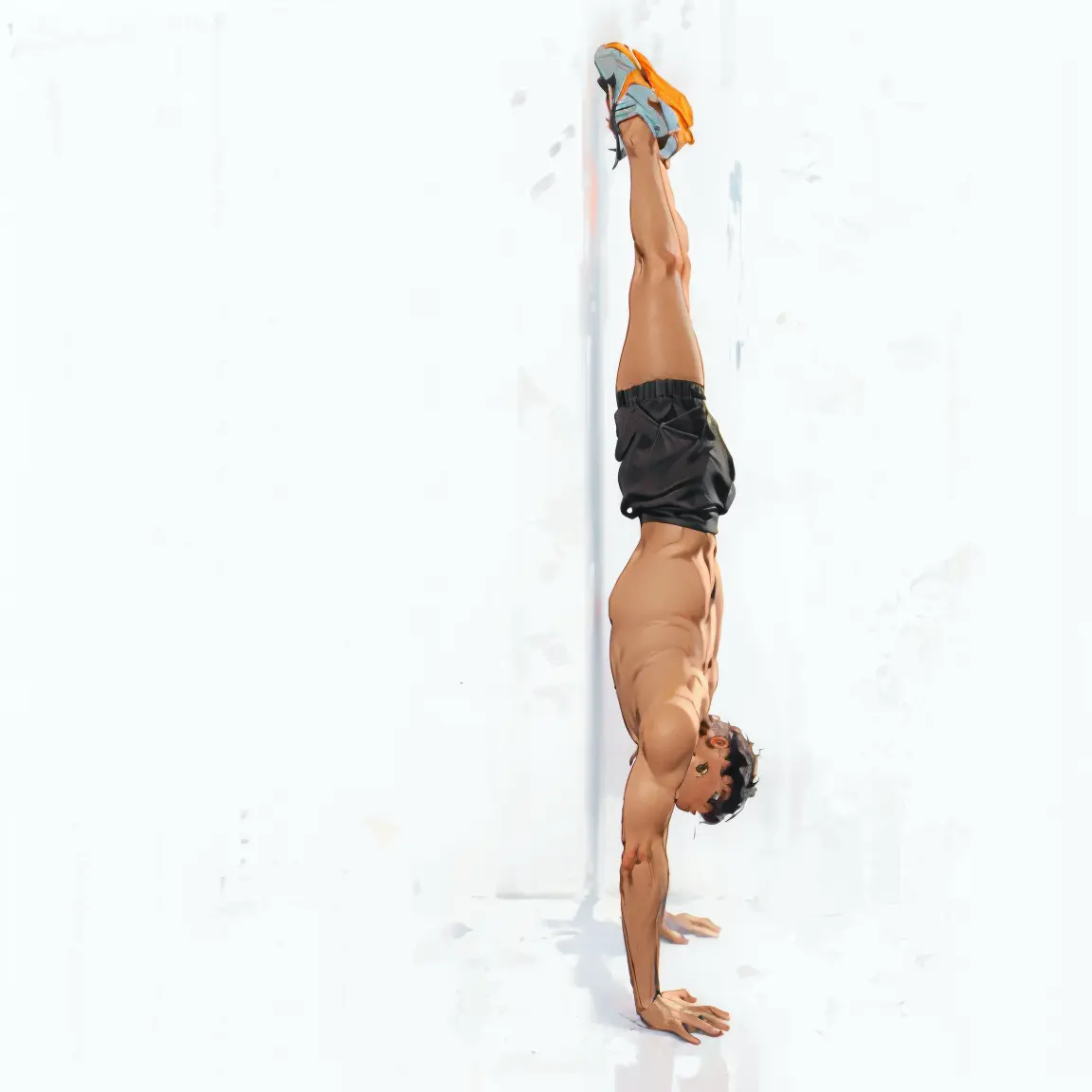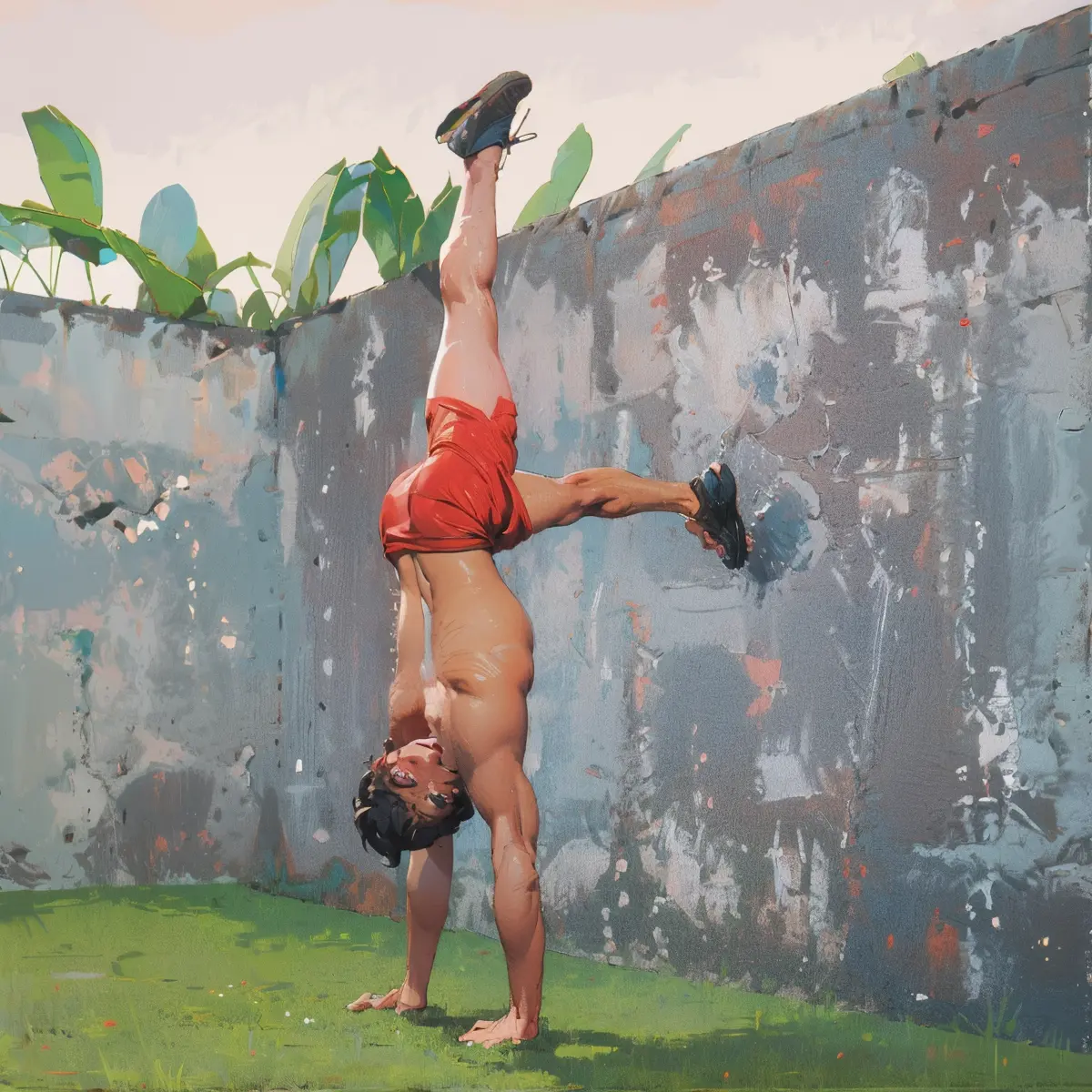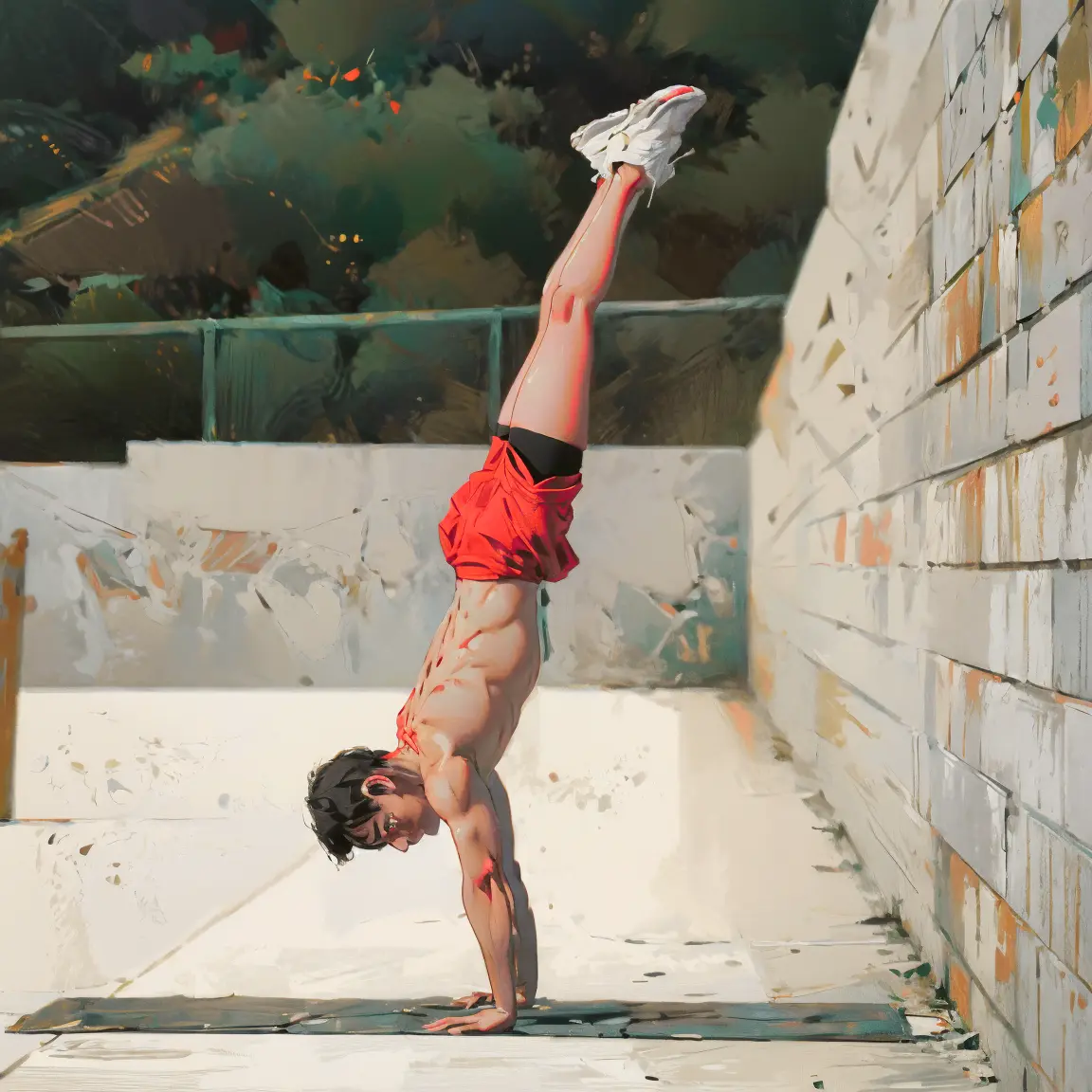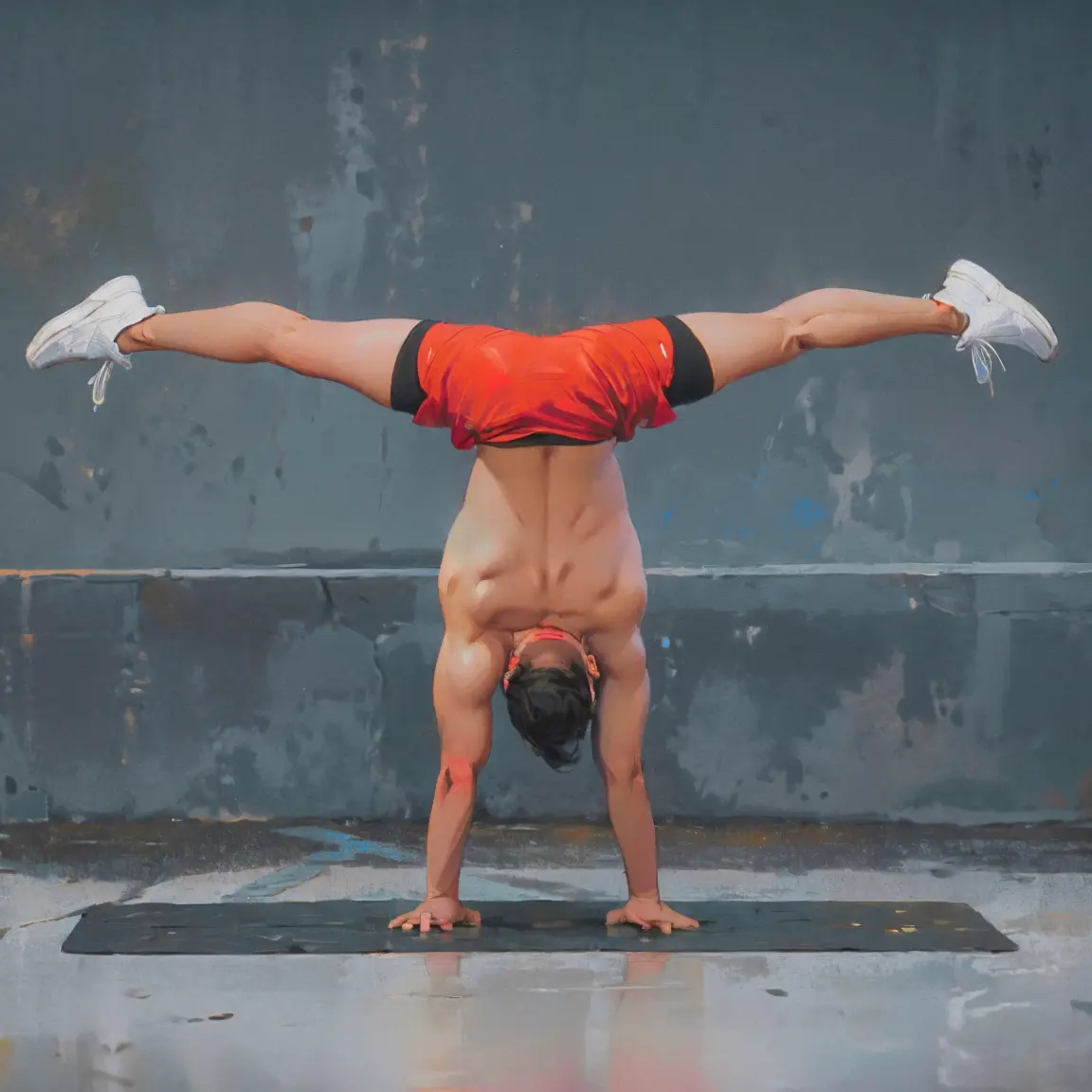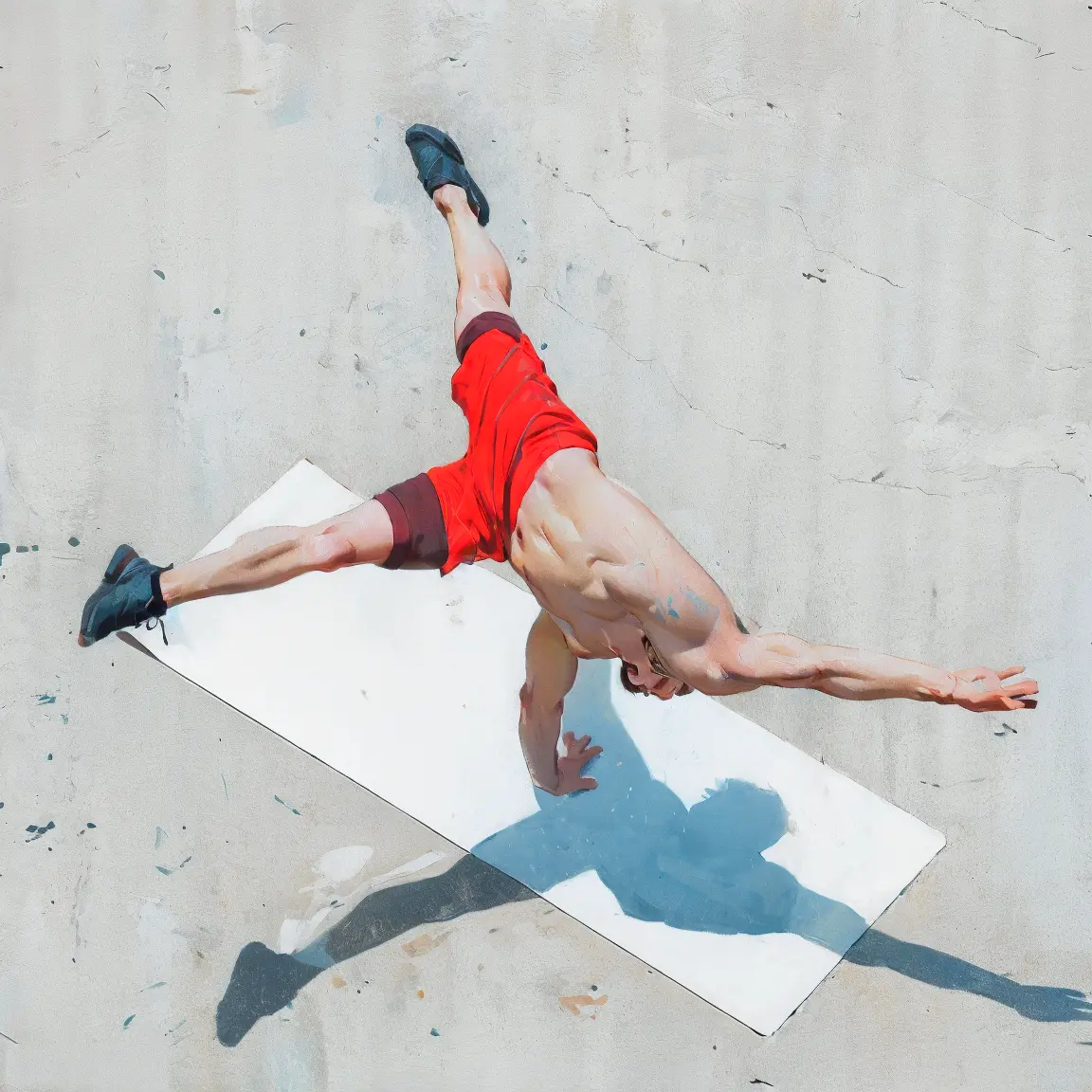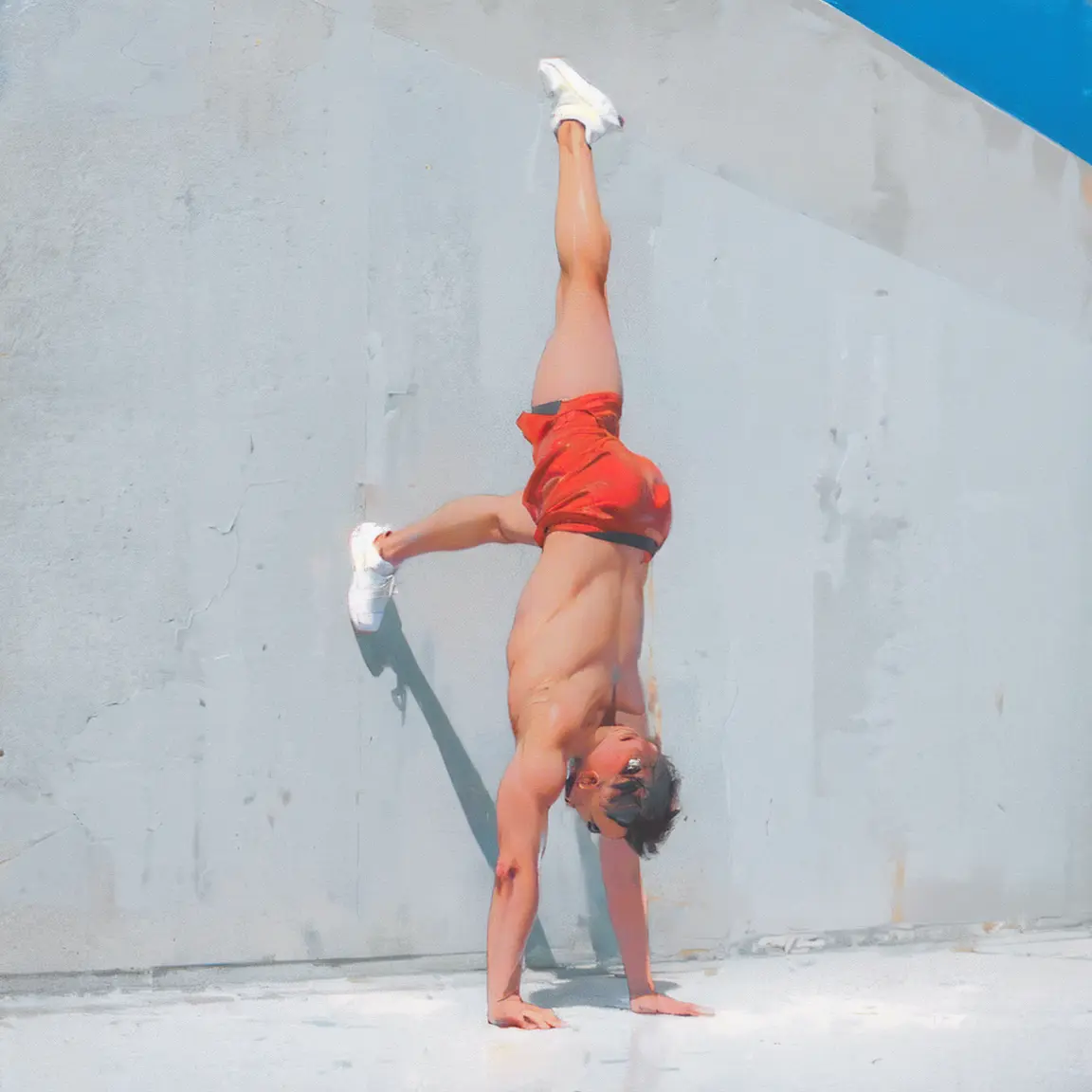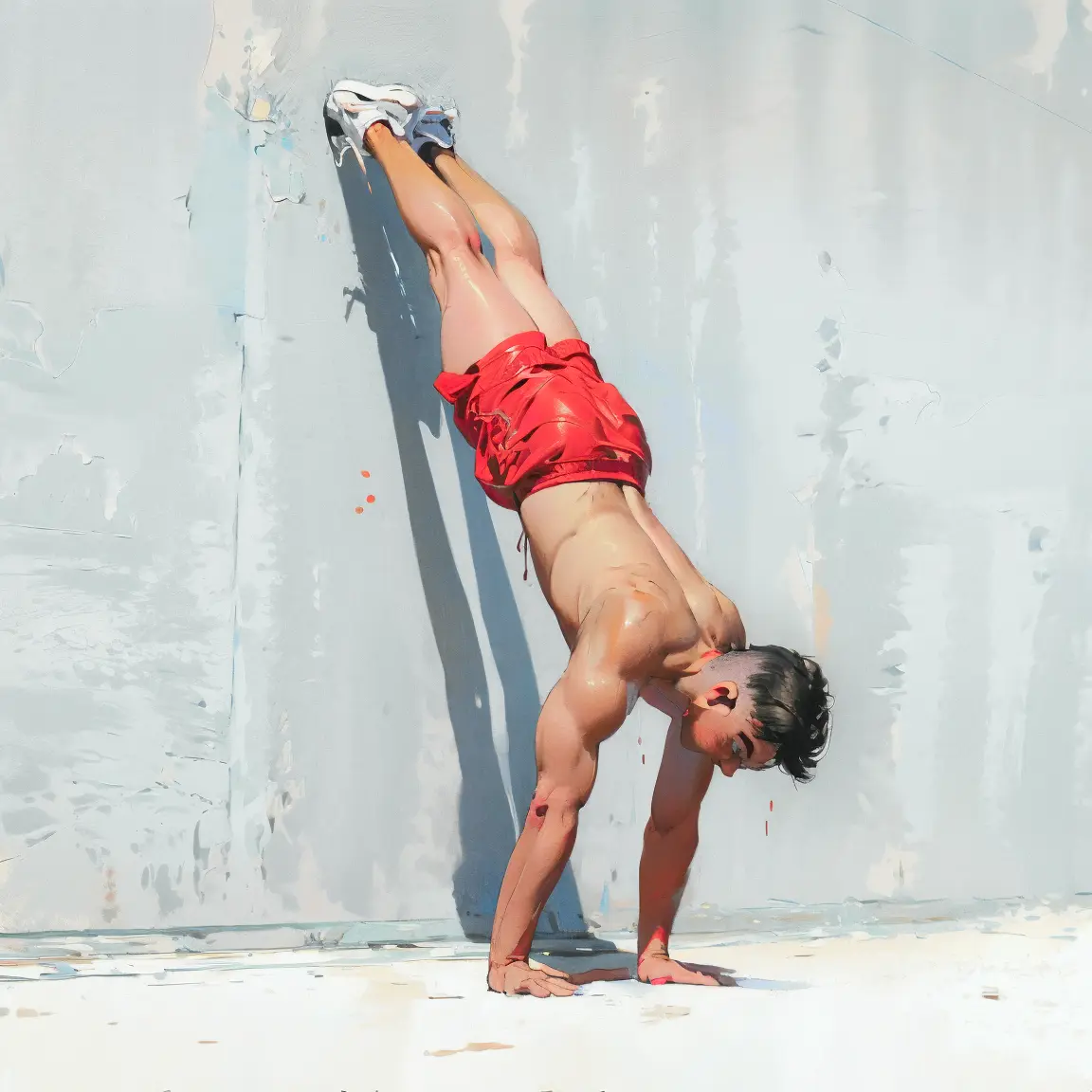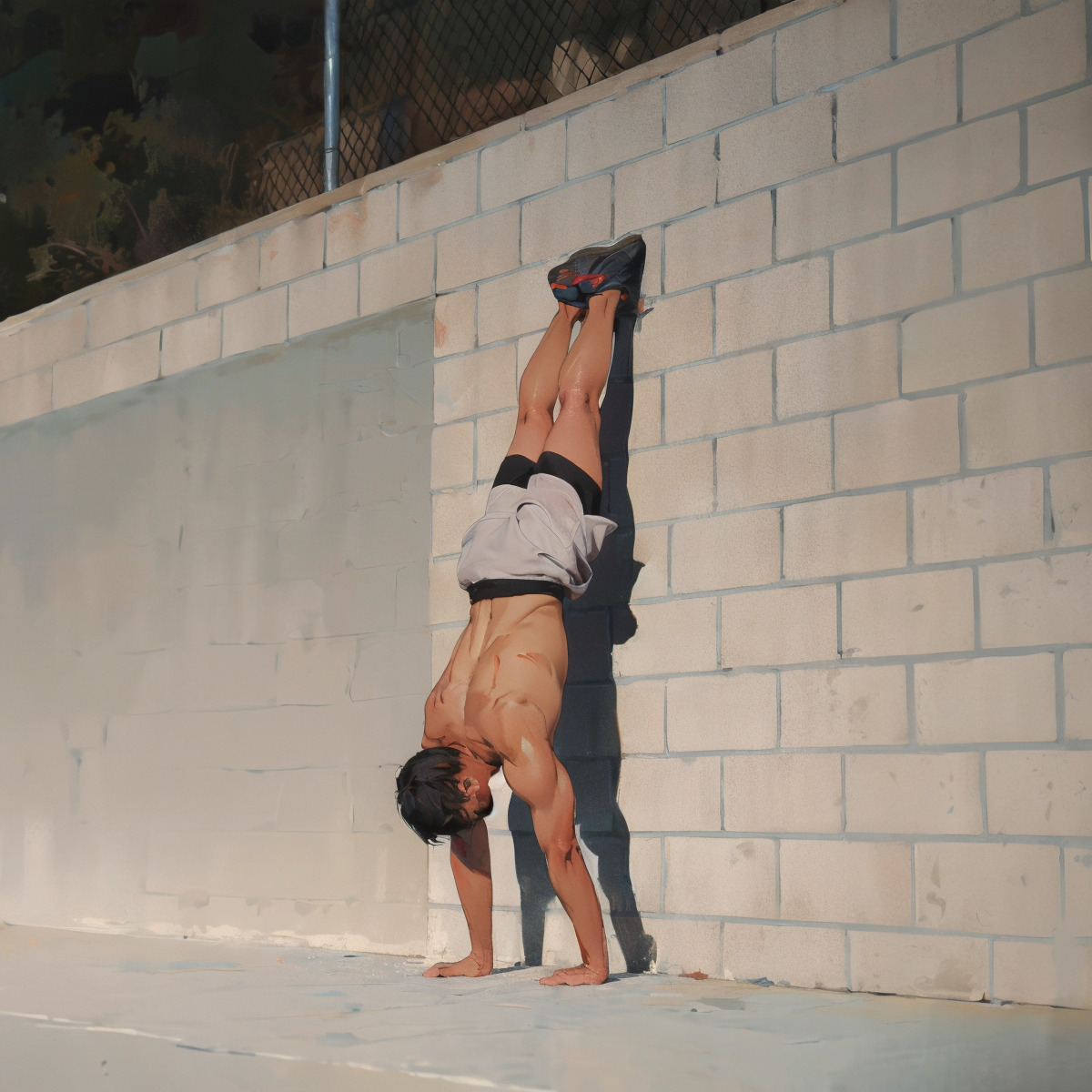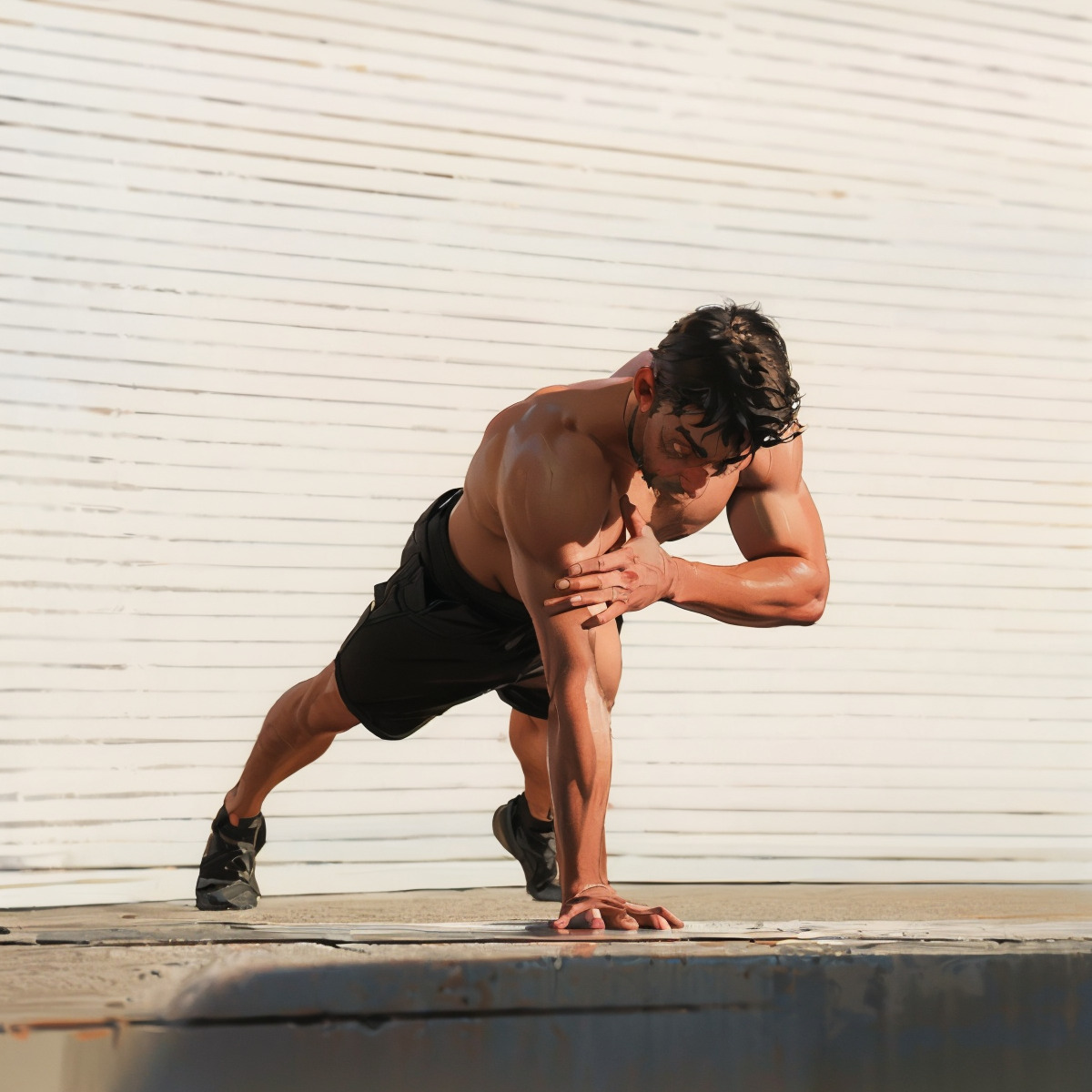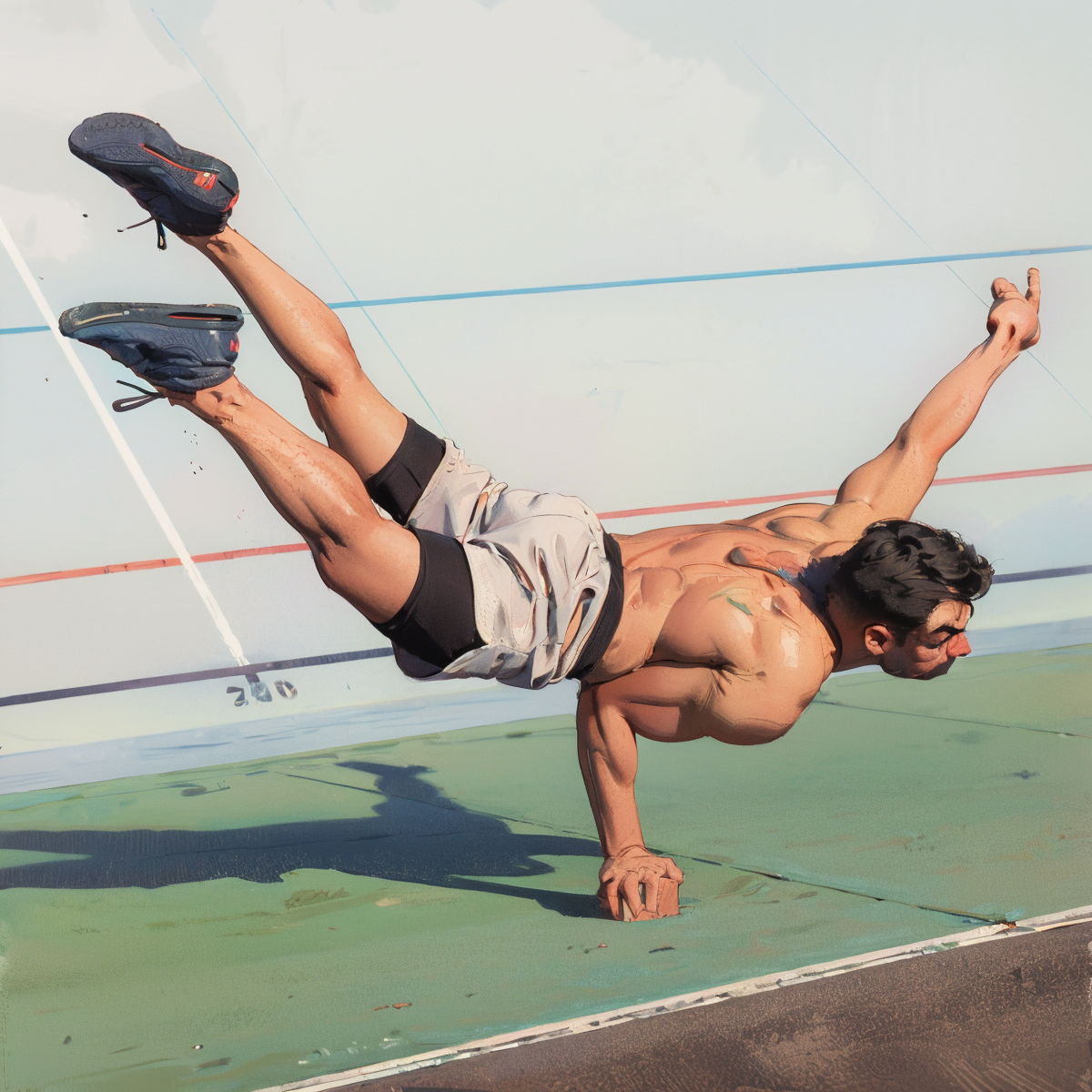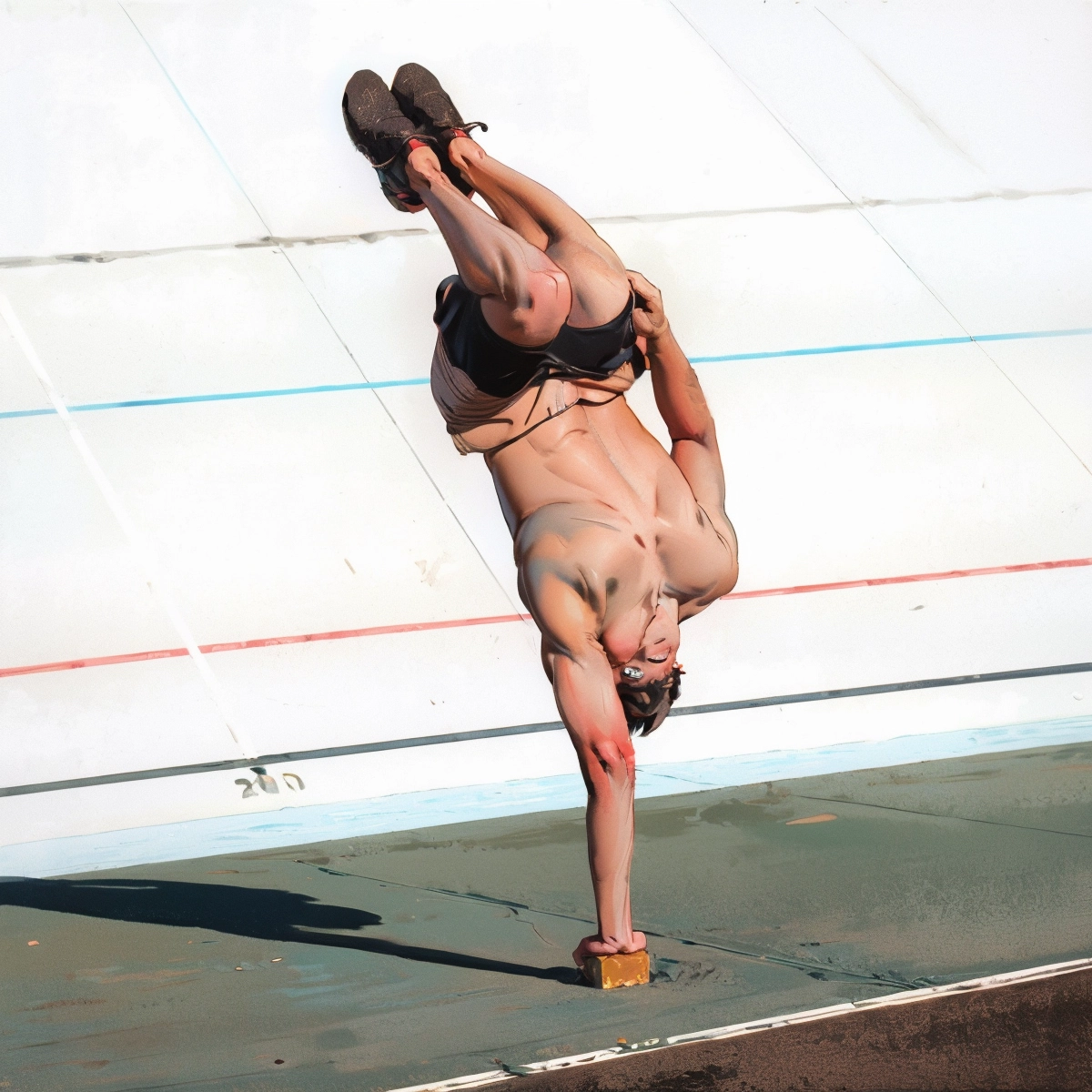2 types of athletes learn to handstand
When looking at someone who is trying to learn handstands it usually boils down to 2 types of athletes. Almost everyone fits into one of these 2 categories.
What are the types
You are either on the flexible end of the spectrum or on the stiffer end. Now important to see from the start is that neither is necessarily more problematic or better than the other. Each group comes with its own specific set of challenges and the journey of master of the handstand will be easier or more difficult at different times.
Let’s generalize a lot
Looking at the data and drawing. Big average line through the middle it is easy to realize the the flexible group is most of the women and the stiff group is mainly me. This is due to anatomical and structural differences. Women tend to have less developed shoulder and chest muscles whilst the female athlete usually has more mobile hips. Men are naturally often less flexible and with that the body is stiffer offering more resistance.
Why does it matter
Understanding in which of the 2 groups you fall will be crucial for programming, goal setting and expectation management.
Each group of athletes should be taking a specific route to get off the wall and to work to the freestanding handstand. Each group needs to invest in different supplementary exercises during training and each group must absolutely avoid making their own individual mistakes to avoid lasting plateaus and frustration.
The
flexible
The flexible
Mobile hips and shoulders have an easy time getting into correct alignment but staying there is a significant difference. Often the blessing turns into a curse as the wide variety of possible small alignment mistakes can feel overwhelming at first.
What comes easy
Your big secret weapon is the tuck handstand. The problem is that you are mobile. Possibly too mobile to be stable. This means the longer your line gets and the further away from the floor your feet are the more your body will move.
Tuck handstands are compact and close to the floor. Your lower back, shoulder and hip mobility almost turns the tuck handstand into a resting position.
Straddle handstands are close to the floor as well but leave more room for errors as your legs might open past the middle split into a pancake like position.
What is difficult
Anything long and far away from the floor becomes more difficult. Depending on how flexible you really are a straight handstand can seem close to impossible at first and there is honestly no point frustrating over it.
What to focus on when training
Group A wants to focus on 2 things when training. Work on tuck and tuck to straddle positions. You have variations that are fairly easy for you. Use these to spend time on your hands. Any moment spent upside down is great as your body will accept being upside down as the new normal.
At the same time work on stability and strength in the extended position. Half slide aways, tuck take offs to straight and pike push up progressions will be extremely helpful!
What to focus on when training
Group A wants to focus on 2 things when training. Work on tuck and tuck to straddle positions. You have variations that are fairly easy for you. Use these to spend time on your hands. Any moment spent upside down is great as your body will accept being upside down as the new normal.
At the same time work on stability and strength in the extended position. Half slide aways, tuck take offs to straight and pike push up progressions will be extremely helpful!
What not to stress about
Instead of trying to rush to the straight handstand and worrying about having a hard time stabilizing the body, build on the fact that you are able to get in and out of certain positions easily. Strength and stability will come over time. Nothing to worry here! As long as you keep training consistently and add some stability work into your routine you will get there. Ride that wave of being able to do things others can’t. Get lots of time upside down and simply enjoy the ride.
How to leave the wall efficiently
Tuck Take Offs are the way to go for you. Come close to the wall and pull into a tuck handstand with your knees just off the wall. Place your shoulders on top of the center of your hands, transfer weight into your fingertips and peel your feet off the wall.
Develop your entire practice from this tuck handstand. Move into the straddle, extend one leg up. This Tuck Take off truly is your key to success.
The
stiff
The stiff
If you are stiff you are less mobile which means there is less range of motion and less room for error. You might have a harder time getting into certain positions but your handstand is quite stable and once you find the way that works for you nothing can rock your boat.
What comes easy
Anything that is long and extended is your true strength. You are robust which means that you are less likely to swirl in the wind and fall over. Your shoulders are bigger and more developed. You have more overhead pushing strength than others meaning you can save your handstand easier and fight for control significantly longer than others.
What is difficult
With a lack of mobility comes a lack of available positions. Straddle handstands will work to introduce variety into the workouts but will not offer a significant benefit when it comes to balance.
Tuck handstands are and will be out of the picture for a while. Handstands are hard and in your case tucks are even harder. Training tucks will be extremely beneficial but achieving a tuck can be a long journey.
What to focus on when training
Build on your strength. Work on your straight handstand and straight to straddle isolation. At the same time invest into your long term future. If you want to take your handstand to the next level you have to gain mobility. Stretch before your handstand sessions to make your training easier. Stretch in between sets to make the upcoming set easier. Stretch at night before bed to get more flexible. In general it is easy: Simply stretch!
Train tuck slides. 1 rep per set. I know. They are hard! You don’t have to go very far. Try to pull your knees as low as possible whilst staying as clean as possible!
What not to stress about
If you have one, do not stress about your banana. As long as you are not hurting your wrists or back indulge in the banana handstand for a while. Basically, do the best you can. Push out hard. Every single handstand should mainly focus on getting taller but the fact that you are in a slight banana should not hold you back! Get time under tension. Get used to being upside down. Your line will improve over time!
How to leave the wall efficiently
Wall Take Offs and Slide Aways are the way to go for you! Anything that keeps your body in a long line whilst transferring weight off the wall and into your hands is the way to go.
How can I knowwhich I am?
Testing which group you belong in is pretty simple. Do a tuck slide & so a half slide away. 1 of the 2 will feel practically impossible or at least significantly harder. If the tuck slide is harder than you are part of the stiff group. If the half slide away is hard chances are high you are part of the more mobile group. If both feel impossible it might be too soon to tell and you have to do more basic, foundational training before we can truly say what you have to focus your training around.
Every body is different and so should be every workout plan and program. We all have strengths and weaknesses. The only way to separate yourself and to truly succeed is to build on your strengths whilst you dial hard into your weaknesses.
Working on things that you are not naturally as good at is hard but ultimately it is there where you can truly make a difference. Simply remember. It is hard for all of us. We are in it together. Plenty have done it before you and plenty will do it after you. Today is your turn to do it!


